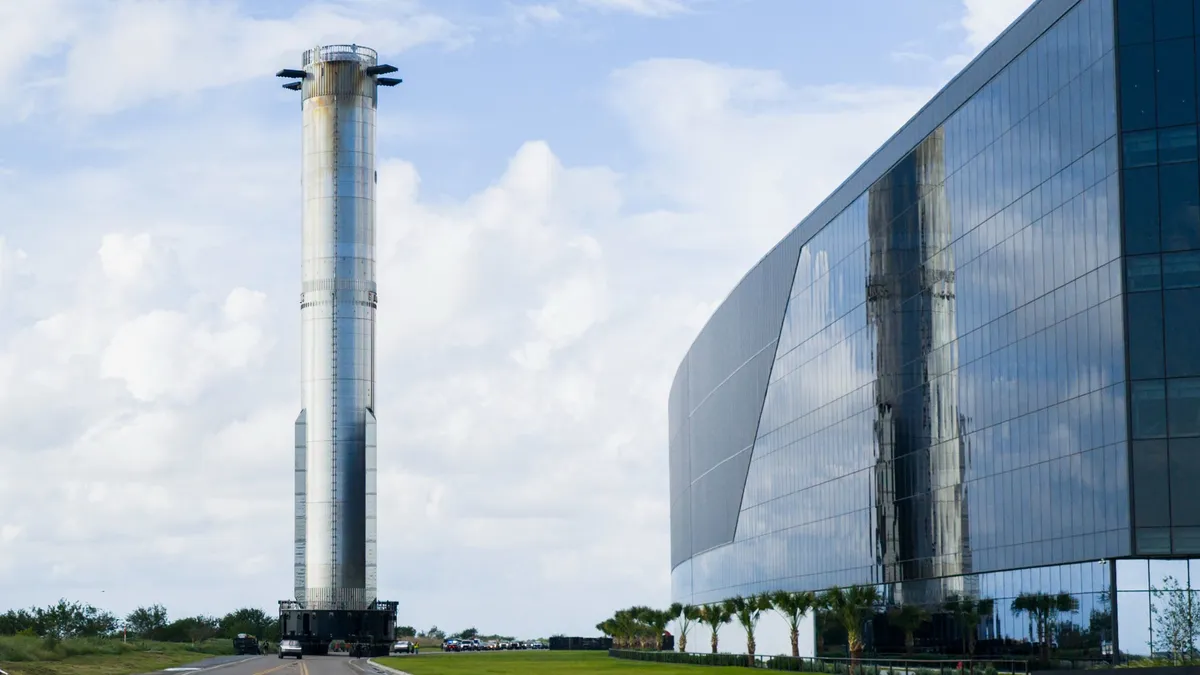
The first stage of SpaceX's Starship megarocket has successfully arrived at the launch pad, gearing up for its highly anticipated test flight scheduled for next week. On Wednesday, October 8, SpaceX shared captivating photos on X, showcasing the enormous booster, known as Super Heavy, making its way to the orbital launch mount located at the company's Starbase site in South Texas.
This movement is a crucial step in preparation for Starship's 11th test flight, which is set to take place on Monday, October 13, at 7:15 p.m. EDT (2315 GMT). Space enthusiasts can catch the action live on Space.com, courtesy of SpaceX, as the company continues to push the boundaries of space exploration.
Starship is renowned as the largest and most powerful rocket ever constructed. The current version stands impressively at about 400 feet (121 meters) tall, with future iterations expected to be even larger, as per insights from company founder and CEO Elon Musk. The rocket comprises two main components: the Super Heavy booster and an upper-stage spacecraft commonly referred to as Starship or Ship for short.
Both components are powered by SpaceX's Raptor engines, with Super Heavy equipped with 33 engines and Ship featuring six. This design emphasizes the goal of achieving full and rapid reusability, which is a cornerstone of SpaceX's mission to make space travel more accessible.
Newly released images highlight Super Heavy's Raptor engines, focusing on the base of the booster as it is carefully positioned atop the launch mount. The visual representation underscores the engineering marvel that is the Super Heavy booster and its pivotal role in the upcoming test flight.
The plan for Starship Flight 11 closely mirrors that of the previous mission, Flight 10, which successfully launched on August 26. Just like that flight, Super Heavy will return to Earth for a controlled splashdown in the Gulf of Mexico. Notably, this will mark the second reentry for this particular booster, which also participated in Starship Flight 8 back in March. During that mission, the booster was caught by the Starbase launch tower's chopstick arms, a feature that will not be utilized during Flight 11.
As SpaceX continues to innovate and refine its technology, the upcoming test flight promises to be another significant milestone in the journey toward sustainable space travel and exploration.